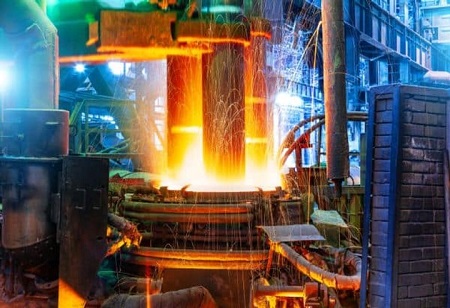Refractories play a major role in the everyday operations of almost all sectors that are involved in manufacturing. These ceramic materials are crucial for all heat-intensive production processes as important industries and the products manufactured by those industries will not exist without refractories. Be it the ambulances we drive or the hospitals and the medical equipment we use or the medicines we take and the road we take, the world we know would not exist without refractories.
Refractories are ceramic materials that are designed for withstanding the very high temperatures in excess of 538 Celsius encountered in modern manufacturing, and since they are used to line the hot surfaces found inside many industrial processes since they are more heat-resistant than metals.
The global
refractory material market size is projected to reach USD 30.3 billion by 2030. Rapid infrastructure development and surge in demand from the automotive sector have resulted in iron & steel manufacturing in both developed as well as developing nations as refractory materials in these countries are used largely for thermal insulation purposes. Furthermore, the increase in modern theme-based building and construction industry has increased the demand for glass used in the production of windowpanes, doors as well as other building parts.
Essential for manufacturing Petrochemical products
Refractories have the capability to withstand physical wear as well as corrosion caused by chemical agents, apart from being resistant to thermal stress & other physical phenomena induced by heat. Therefore, they are crucial for refining gasoline and manufacturing petrochemical products.
Refractory products are classified into two main categories based on their shapes such as preformed shapes/unformed compositions and known as specialty/monolithic refractories. The other refractory ceramic fibers resemble residential insulation; however, it insulates at
higher temperatures. Refractories can either be molded or they can be pressed for use on floors as well as walls.
Refractories are made up of natural as well as synthetic materials. These usually include non-metallic or combinations of compounds and minerals. Some examples include dolomite, alumina, bauxite, zirconia, fireclays, chromite, silicon carbide, and magnesite.
Refractories for Industrial Furnaces
Based on various factors furnace refractories are selected. These include resistance to conductivity, physical wear, and cost, maximum temperature exposure, resistance to chemical corrosion, thermal shock resistance, thermal conductivity, etc.
“The market for industrial furnaces can be categorized as the market for conventional furnaces, non-technology furnaces, and the technology-driven new age furnaces. The technology furnace market has been a niche market for the last few decades with very few players offering furnaces that are supported by technology and innovative ideas. Moreover, there has been a rising need for sustainable and long-term investments in furnaces that can help companies stay competitive and reap desired business outcomes,” says Suresh Vispute, Managing Director at Furnteck.
“Previously what was only a cost-oriented conventional furnace market is now getting rapidly replaced by innovative technology and value-driven sophisticated furnace market,” he adds.
There are a wide range of refractory compositions fabricated however, the most commonly used are silica, alumina, and magnesium. Zirconia is used when the material has to withstand very high temperatures. While these refractories are used in a number of environments such as acidic atmospheres where they are not attacked by alkalis, silicon carbide or graphite is used as a refractory In an oxygen-free atmosphere for withstanding extremely high temperatures.
Although most of the standard refractory products look like a typical construction brick, there are numerous forms and shapes in which they may be used for constructing an arch or forming a round opening in a furnace.
The Road ahead
The Indian refractory industry is a Rs 9000 crore market. The major players in this market include RHI Magnesita India, TRL Krosaki, and Dalmia OCL. While seventy-five percent of the refractories produced using magnesia, alumina, or silica are used with the others being used by boiler industries, cement, and glass, petrochemicals & ceramics. refractories are highly essential materials for various high-temperature equipment that are used in the internal linings of blast furnaces as well as converters used for steel making & in furnaces for heating materials before further processing.
Refractories must be continuously manufactured since they are critical components to almost all products supply chains. However, at the same time, the highest priority of companies should be the safety and well-being of industry employees and the communities in which they are operating.
